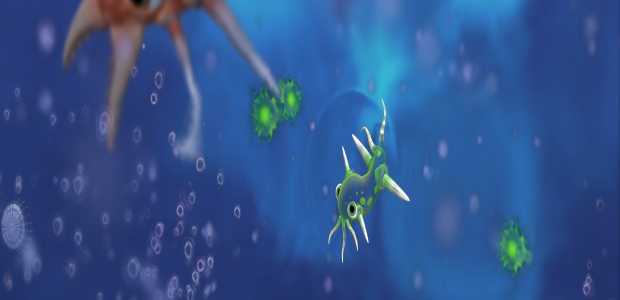Alexander Oparin introduced this concept. It suggests that the life on earth was formed in ocean or pond as a result of reaction of energy-chemicals present in atmosphere then. Amino acid & protein are important elements for life; the reaction above might have happened 3.5 billion years ago.
As an experimental proof of this theory Miller and Urey conducted an experiment in laboratory. They simulated the conditions thought at the time to be present on the early Earth, and tested for the occurrence of chemical origins of life. Later it was concluded that there were actually well over 20 different amino acids produced in Miller’s original experiments.
The primordial soup is recognized a kind of relatively homogeneous soup by itself. Such a soup would be terrible for the formation and stability of cell membranes. There are other views on how stability could be improved – e.g. mica sheets, clay bubbles, and hydrothermal vents, super low temperatures, rather than high temperatures have also been proposed.
There are also some concerns / challenges raised for this theory –
– The probability rules out the creation of life in primordial soup.
– The gases considered in miller experiment may not be available in early earth atmosphere.
– Fossil records do not support the theory.
However, recent studies also report some positive signs. What triggered the ‘life’ to these set of ‘non living’ chemicals (in the soup) is still a mystery. Generally it is accepted that some important ingredients for life came from meteorites bombarding the early Earth. Recent study at University of Leeds shows that a chemical (vital for making something alive – i.e. generating the energy) could have been created when meteorites containing phosphorus minerals hit the early Earth. Such meteorite might have landed in hot acidic pools of liquids which were possibly common zones around volcanoes across the early Earth.
The adenosine tri-phosphate is the magic chemical that is broken down and reformed during respiration to give life. The process of breaking it down and reforming it releases some energy which is used to drive the reactions of ‘life’. This entire activity requires complex enzymes that are not likely to have existed on the Earth. With this thought scientists were trying hard to find a basic chemical with similar properties to ATP and that does not require enzymes to transfer energy. Phosphorus is the key element in ATP and even in DNA – however phosphorus on earth in water insoluble… so the clue is the meteorite might have brought the more rich form of phosphorus to early Earth. So in the experiment this impact was simulated using sample of meteorite and geothermal acid – as a result the ‘pyrophosphite’ was formed, which scientists believe could have acted as earlier ATP.
The Curiosity rover which landed on Mars has also reported presence of Phosphorus on Mars … so who knows in future we might come across one more surprise!
Certainly, it is so complex to determine how was early Earth & then to mimic it in the laboratory. So obviously, there are more theories to help all of us in the ‘search of life’. One such theory ‘Iron-Sulfur world theory’ proposes that early life may have formed on the surface of iron sulphide minerals … we will see more about this theory in our upcoming post.


































Nice picture from Spore.